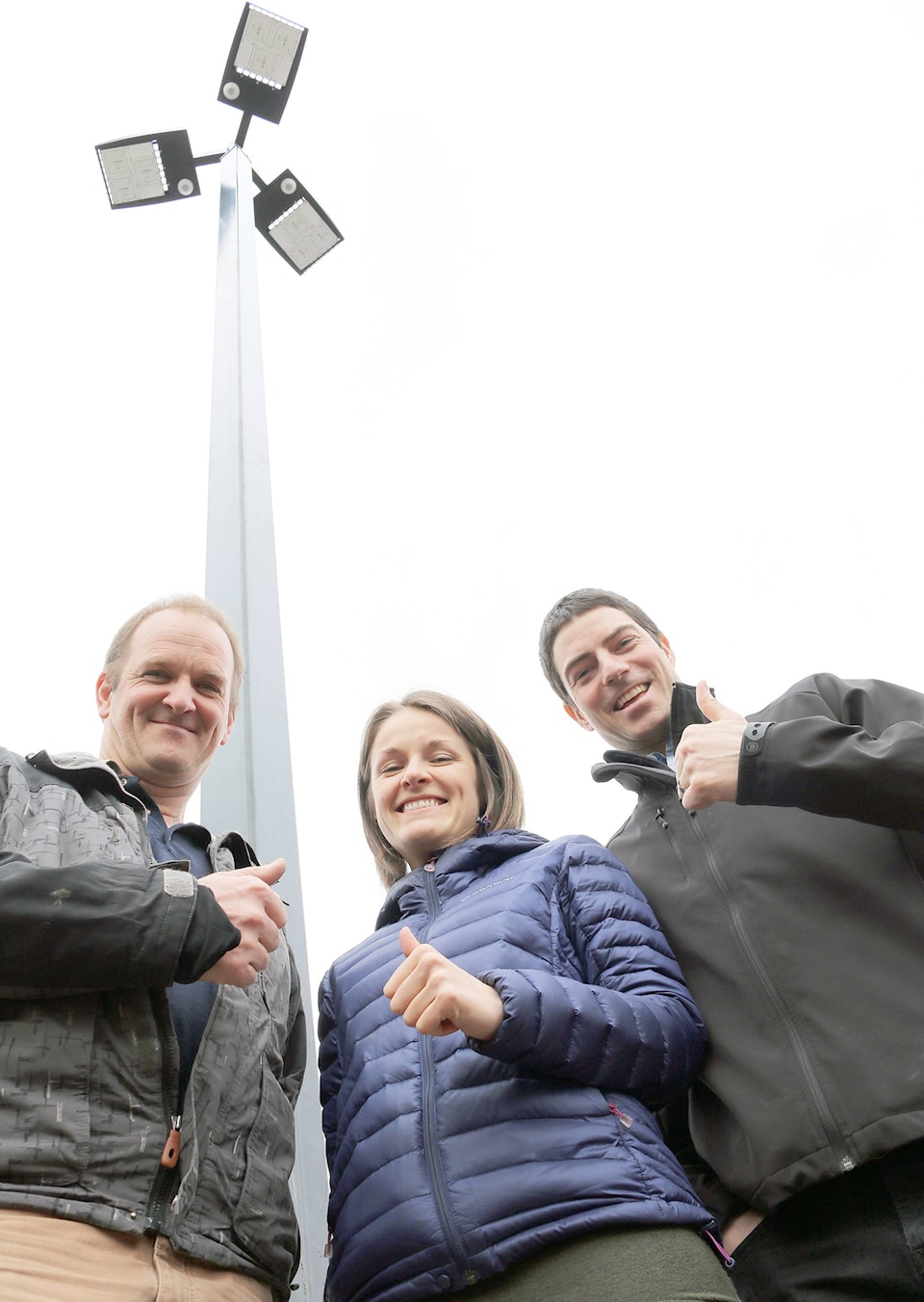CASTLEGAR — An ambitious capital project to illuminate the Selkirk College Castlegar Campus at night provides a glowing example of what is possible for large-scale outdoor lighting.
Looking for a solution to deal with improper lighting throughout the 27-acre campus at the confluence of the Columbia and Kootenay rivers, the college turned to a system on the leading edge of technology. Now complete, the project has succeeded in helping modernize the campus to serve students and staff well into the future.
“The big driving factor was safety,” says Mike Giesler, the Selkirk College facilities lead on the project. “The second part was energy savings which shows the college’s leadership with sustainability initiatives that we are working to accomplish. We are an educational facility and want students to see what a modern system looks like, so we need to show the way in that capacity.”
The Castlegar Campus first opened in 1966 and the outdoor lighting system was showing its age. Floodlights on the corners of buildings did not adequately illuminate parking lots in areas that border dark forests and glare from the campus bothered residents on the other side of the river and near the airport. The project required more than 100 new lights to be installed around the main campus buildings, parking lots, student residence, walkways and roadways. In coming up with a solution to serve the college into the future, Prism Engineering was contracted as the design engineers and construction coordinators. “This is an advanced upgrade that went above what the standard off-the-shelf parking lot lighting would be,” says Sam Thomas, Kootenay Branch Manager for Prism Engineering. “The control system is what sets this apart from what you would see elsewhere. It’s fully addressable down to each individual fixture and is controlled by a software program in the maintenance building.”
The control system communicates wirelessly with all the pole-mounted lights that also incorporate onboard occupancy and motion sensors. When a vehicle, person, or even animal passes close to a parking lot light, the light will automatically turn on or increase in brightness. Through the computerized control centre, dimming levels can be adjusted and trends determined in order to provide the safest and most efficient outdoor lighting. By accurately matching the need and having the lights only come on or brighten when required, the college saves on consumption and cost. It is estimated that the control system will save 80,300-kilowatt hours (kWh) per year which translates into about $6,500 annually in energy savings over a conventional LED system. The only system of its kind overseen by Prism Engineering in the West Kootenay, the project is an example of what is possible for other large sites.
“This system is designed for the future and will carry forward in time well,” says Thomas. “If Selkirk College went with a standard system, in five years it would be outdated. Lighting is a rapidly evolving technology sector that we want to stay ahead of the curve on.”
As part of the project, the college also installed four solar-powered parking lot luminaries near the front entrance that are not connected to the electrical grid at all and operate strictly off the solar panels and battery packs within the poles. As well as demonstrating a renewable energy technology in action, these solar powered lights also saved the college on the cost of providing trenching for the poles during installation. The project took several months to complete this past summer and autumn with trenching and installation work done by Houle Electric. Now finished, the project on the Castlegar Campus is a model for students, staff and visitors. “It’s really a showcase, we have received very positive feedback from both staff and students,” says Giesler. “When you are designing something, you should design it for the future and not just for today.”
To learn more about Selkirk College sustainability projects and initiatives head to selkirk.ca/sustainability.
